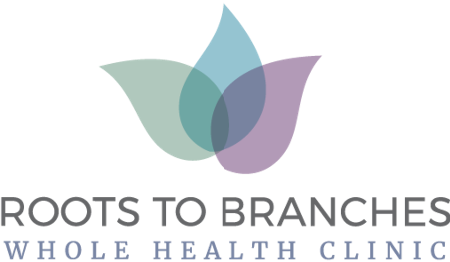What is Pre-Menstrual Syndrome (PMS)?
It is believed that Premenstrual Syndrome (PMS) affects up to 40% of women of reproductive age. PMS is essentially when women experience a number of psychological and physical symptoms in the second half of their menstrual cycle that completely resolves by day two of their menses.
PMS can affect women from the onset of their cycle and into perimenopause. The impact can be significant; women who experience PMS miss more work and report “lower health-related quality of life.”
This is why PMS and women’s health issues should be taken seriously. Symptoms can include, but are not limited to:
- Mood swings, anger, irritability, anxiety, depression
- Socially withdrawn
- Breast pain or tenderness
- Headaches
- Joint or muscle pain
- Abdominal bloating
- Swelling of extremities
- Weight gain
Why do women experience PMS?
The cause of PMS has not been clearly established and not one cause will be the same for every person. Increased risk of PMS could be the result of a number of factors:
- Hormonal fluctuations: The cyclical changes of estrogen and progesterone during the cycle can provoke PMS symptoms. It is interesting to note that women diagnosed with PMS do not have higher levels of estrogen or progesterone than those that do not, and therefore it is still not clear why some women seem to be more sensitive to these hormonal fluctuations.
- Mood changes could be attributed to the impact estrogen and progesterone can have on neurotransmitters, such as serotonin, dopamine, and GABA.
- Nutritional choices and specific deficiencies.
- Environmental factors, particularly stress.
- Past traumatic events and/or history of childhood trauma can be linked with higher PMS risk (Osborn 2020).
- There may be a genetic influence to PMS.
So, you have PMS, what can YOU do about it?
Three dietary strategies, backed by science, that you can make to lessen your symptoms or reduce your risk of PMS:
- Replace refined grains with whole grains. Those who swapped out 50% of their refined grains with whole grains, had significant improvements in their mood, and other physical and behavioural PMS symptoms (Esmaeilpour, 2019).
A whole grain contains the whole original kernel, including the bran, germ, and endosperm. Refined grains are processed removing the bran and germ, reducing the protein, fibre, and nutrient density of the grain. Examples of whole grains include whole wheat, barley, bulgar, oatmeal, whole-grain cornmeal, and brown rice.
- Reduce alcohol: Reduce your alcohol intake to less than 1 drink per day because moderate to high alcohol intake was associated with increased risk of PMS (Fernandez, 2018).
- Incorporate soy into your diet: soy protein, I recommend organic, non-genetically modified, has been shown to decrease headaches, swelling, breast tenderness, and menstrual cramps (Bryant 2005). It seems to be the isoflavones that give the most benefit, with soybeans (boiled or roasted), natto, tofu, tempeh, as some of the richest sources.
P.S. Ready to feel well throughout the WHOLE month? Naturopathic medicine can help, where we review your whole health history and give evidence-based strategies to improve your PMS. Whenever you are ready there are 5 ways I can start helping you to have the balanced hormonal health you deserve.
- Grab a copy of my free feminine boosting energy guide – click here
- Follow me on the ‘gram – click here
- Work with me privately in my signature program, the Energized & Empowered 3-Month Natural Health Experience – book your complimentary discovery call here
- Get on the waitlist for the next offering of our women’s group health program, the Wild Collective – click here
- Book your fertility focused initial appointment – Click here
Photo credit: Towfiqu barbhuiya on Unsplash
References:
Bryant, M., Cassidy, A., Hill, C., Powell, J., Talbot, D., & Dye, L. (2005). Effect of consumption of soy isoflavones on behavioural, somatic and affective symptoms in women with premenstrual syndrome. The British Journal of Nutrition, 93(5), 731–739.
Esmaeilpour, M., Ghasemian, S., & Alizadeh, M. (2019). Diets enriched with whole grains reduce premenstrual syndrome scores in nurses: An open-label parallel randomised controlled trial. The British Journal of Nutrition, 121(9), 992–1001. https://doi.org/10.1017/S0007114519000333
Fernández, M. del M., Saulyte, J., Inskip, H. M., & Takkouche, B. (2018). Premenstrual syndrome and alcohol consumption: A systematic review and meta-analysis. BMJ Open, 8(3). https://doi.org/10.1136/bmjopen-2017-019490
Hofmeister, S., Bodden, S. (2016). Premenstrual syndrome and premenstrual dysphoric disorder. Am Fam Physician, 94(3), 236-240.
Osborn 2020: Osborn, Elizabeth, Wittkowski, A., Brooks, J., Briggs, P. E., & O’Brien, P. M. S. (2020). Women’s experiences of receiving a diagnosis of premenstrual dysphoric disorder: A qualitative investigation. BMC Women’s Health, 20. https://doi.org/10.1186/s12905-020-01100-8
Wakatsuki, Y., Inoue, T., Hashimoto, N., Fujimura, Y., Masuya, J., Ichiki, M., Tanabe, H., & Kusumi, I. (2020). Influence of Childhood Maltreatment, Adulthood Stressful Life Events, and Affective Temperaments on Premenstrual Mental Symptoms of Nonclinical Adult Volunteers. Neuropsychiatric Disease and Treatment, 16, 1–10. https://doi.org/10.2147/NDT.S232925

